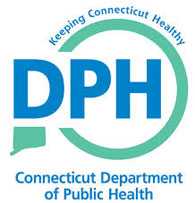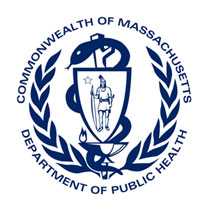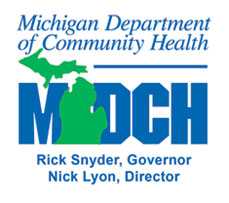SMART State Projects
On this Page
Connecticut Department of Public Health (CDPH)
 States Monitoring Assisted Reproductive Technology (SMART) Collaborative Participation
States Monitoring Assisted Reproductive Technology (SMART) Collaborative Participation
- Member since 2013.
Assisted Reproductive Technology (ART) Use in Connecticut (2011)
ART contributed to 3.5% of all infants born in the state.
Per capita ART use was 4,708 procedures per million women aged 15–44 years (nearly 2 times the national average of 2,401 procedures per million women aged 15–44 years).
ART contributed to
- 35% of all multiple birth infants in the state.
- 13%–14% of all low and very low birth weight infants in the state.
- 11%–15% of all preterm and very preterm infants in the state.
Insurance Coverage
- Mandated coverage for infertility treatment—includes lifetime maximum coverage of two cycles of in vitro fertilization (IVF), gamete intra-fallopian transfer (GIFT), zygote intra-fallopian transfer (ZIFT), or low tubal ovum transfer—with not more than two embryo implantations per cycle.
Current Projects and Partnerships
- Connecticut’s participation in the SMART collaborative is part of a larger initiative within the state to reduce low birth weight and associated infant mortality. Reduction of low birth weight is an objective in the state’s health improvement plan and was recently selected by the commissioner of CDPH as one of six priorities in the plan. Learn more about CDPH ART.
- CDPH is partnering with the state March of Dimes and the medical director for the state Medicaid program to ensure that surveillance efforts are incorporated into consumer awareness strategies across the state. These efforts encourage the use of elective single embryo transfer (eSET), when appropriate, and allow the state to understand the degree to which families of all income levels access ART treatments.
- CDPH collaborated with Connecticut Behavioral Risk Factor Surveillance System (BRFSS) to add four new questions specific to infertility and ART to the 2013 statewide survey.
Florida Department of Health (FDOH)
 States Monitoring Assisted Reproductive Technology (SMART) Collaborative Participation
States Monitoring Assisted Reproductive Technology (SMART) Collaborative Participation
- Member from 2008–2014.
- State datasets linked with NASS
- Birth certificate files (1998–2011).
- Infant death records (1998–2011).
- Fetal death records (1998–2011).
- Birth defects records (1998–2011).
- Maternal and infant hospital discharge records (1998–2011).
Assisted Reproductive Technology (ART) Use in Florida (2011)
- ART contributed to 1.2% of all infants born in the state.
- Per capita ART use was 1,878 procedures per million women aged 15–44 years (less than the national average of 2,401 procedures per million women aged 15–44 years).
- ART contributed to
- 17% of all multiple birth infants in the state.
- 5% of all low and very low birth weight infants in the state.
- 4% of all preterm and very preterm infants in the state.
Insurance Coverage
- No mandated coverage for infertility treatments.
Past Projects and Partnerships
- Research on the impact of ART on live birth outcomes.
- FDOH collaborated with Florida Behavioral Risk Factor Surveillance Survey (BRFSS) to add five new questions specific to infertility and ART to the 2012 statewide survey.
SMART Collaborative Publications Using Data from Florida
- Cohen B, Bernson D, Sappenfield W, et al. Accuracy of assisted reproductive technology information on birth certificates: Florida and Massachusetts, 2004–2006. Paediatr Perinat Epidemiol. 2014;28:181-190.
- Grigorescu V, Zhang Y, Kissin DM, et al. Maternal characteristics and pregnancy outcomes after Assisted Reproductive Technology by infertility diagnosis: ovulatory dysfunction versus tubal obstruction. Fertil Steril. 2014;101:1019-1025.
- Sauber-Schatz E, Sappenfield W, Grigorescu V, et al. Obesity, Assisted Reproductive Technology, and early preterm birth—Florida, 2004–2006. Am J Epidemiol. 2012;176:886-896.
Massachusetts SMART Project Highlights
 States Monitoring Assisted Reproductive Technology (SMART) Collaborative Participation
States Monitoring Assisted Reproductive Technology (SMART) Collaborative Participation
- Member since 2001.
- State datasets linked with NASS
- Birth certificate files (1998–2010).
- Infant death records (1998–2010).
- Maternal death records (1998–2010).
- Fetal death records (1997–2010).
- Birth defects records (1998–2010).
Assisted Reproductive Technology (ART) Use in Massachusetts (2011)
- Among all states, the contribution of ART to infants born in the state was highest in Massachusetts at 4.5%.
- Per capita ART use was 7,502 procedures per million women aged 15–44 years (more than 3 times the national average of 2,401 procedures per million women aged 15–44 years).
- ART contributed to
- 40% of all multiple birth infants in the state.
- 15%–17% of all low and very low birth weight infants in the state.
- 13%–17% of all preterm and very preterm infants in the state.
Insurance Coverage
- Mandated coverage for infertility treatment, including in vitro fertilization (IVF), gamete intra-fallopian transfer (GIFT), and zygote intra-fallopian transfer (ZIFT). While the law does not limit the number of treatment cycles and does not have a dollar lifetime cap, many policies impose a six-cycle lifetime cap. Despite this mandate being considered comprehensive, there are many barriers to coverage, including cycle limits, strict medical criteria, and exemptions for employers who self-insure and those that are based in another state.
Current Projects and Partnerships
- MDPH is working with Massachusetts fertility clinics on a patient education initiative on the benefits of elective single embryo transfer during ART.
- MDPH is a partner with the Society for Assisted Reproductive Technology (SART), Boston University School of Public Health, and CDC on the Massachusetts Outcome Study of ART (MOSART). This is an NIH-funded research effort to study maternal and infant outcomes and risks related to infertility in Massachusetts.
- MDPH collaborated with Massachusetts Behavioral Risk Factor Surveillance System (BRFSS) to add three new questions specific to infertility and ART to the 2012 statewide survey.
- The Massachusetts Pregnancy Risk Assessment Monitoring System (PRAMS) program collected self-reported data on ART using the same questions as the birth certificate since 2007. In 2008, MDPH published a paper that compared births reported in Massachusetts PRAMS with birth certificate data. A higher prevalence of births conceived with infertility therapies (ART, artificial insemination treatments, and fertility drugs) were reported in PRAMS than the birth certificates, particularly among women aged 25–34 years.
- MDPH is in the early phases of planning a project using the Massachusetts All Payer Claims Database (APCD). This includes medical, pharmacy, and dental claims, as well as information about member eligibility, benefit design, and providers for all payers covering Massachusetts residents. This project will better estimate the prevalence of infertility in Massachusetts, explore the use of both ART and non-ART fertility treatments, and learn more about insurance coverage for these treatments. MDPH is now collecting fertility assistance information in two places on the birth certificate—the facility work sheet and the mother’s work sheet. This information will be compared with the information in the National ART Surveillance System to determine how best to collect ART information on the birth certificate.
SMART Collaborative Publications Using Data from Massachusetts
- Cohen B, Bernson D, Sappenfield W, et al. Accuracy of assisted reproductive technology information on birth certificates: Florida and Massachusetts, 2004–06. Paediatr Perinat Epidemiol. 2014;28:181-190.
- Grigorescu V, Zhang Y, Kissin DM, et al. Maternal characteristics and pregnancy outcomes after assisted reproductive technology by infertility diagnosis: ovulatory dysfunction versus tubal obstruction. Fertil Steril. 2014;101:1019-1025.
- Tepper NK, Farr SL, Cohen BB, et al. Singleton preterm birth: risk factors and association with assisted reproductive technology. Matern Child Health J. 2012;16:807-813.
- Zhang Y, Cohen B, Macaluso M, Zhang Z, Durant T, Nannini A. Probabilistic linkage of Assisted Reproductive Technology information with vital records, Massachusetts, 1997 – 2000. Matern Child Health J. 2012;16:1703-1708.
- Zhang Z, Macaluso M, Cohen B, et al. Accuracy of Assisted Reproductive Technology information on the Massachusetts birth certificate, 1997-2000. Fertil Steril. 2010;94:1657-1661.
- Cohen B, Zhang Z, Nannini A et al. Assisted reproductive technology and trends in low birthweight--Massachusetts, 1997-2004. MMWR. 2009;58:49-52.
- Boulet SL, Schieve LA, Nannini A, et al. Perinatal outcomes of twin births conceived using assisted reproduction technology: a population-based study. Hum Reprod. 2008;23:1941-1948.
- Schieve LA, Cohen B, Nannini A, et al. A population-based study of maternal and perinatal outcomes associated with assisted reproductive technology in Massachusetts. Matern Child Health J. 2007;11:517-525.
- Sunderam S, Schieve LA, Cohen B, et al. Linking birth and infant death records with assisted reproductive technology data: Massachusetts, 1997-1998. Matern Child Health J. 2006;10:115-125.
Michigan Department of Community Health (MDCH)
 States Monitoring Assisted Reproductive Technology (SMART) Collaborative Participation
States Monitoring Assisted Reproductive Technology (SMART) Collaborative Participation
- Member since 2008.
- State Datasets Linked with NASS
- Birth certificate files (1996–2011).
- Infant death records (1996–2011).
- Birth defects records (1996–2011).
- Maternal and infant hospital discharge records (1996–2011).
Assisted Reproductive Technology (ART) Use in Michigan (2011)
- ART contributed to 1.2% of all infants born in the state.
- Per capita ART use was 1,786 procedures per million women aged 15–44 years (less than the national average of 2,401 procedures per million women aged 15–44 years).
- ART contributed to
- 16% of all multiple birth infants in the state.
- 5%–6% of all low and very low birth weight infants in the state.
- 4%–5% of all preterm and very preterm infants in the state.
Insurance Coverage
- No mandated coverage for infertility treatments.
Current Projects and Partnerships
- State surveillance using Michigan’s linked data, the Michigan Behavioral Risk Factor Surveillance System (BRFSS), and the Michigan Pregnancy Risk Assessment Monitoring System to provide a comprehensive picture of infertility, its treatment, and outcomes among residents of Michigan. Learn more about the Michigan BRFSS Surveillance Brief [PDF - 90KB].
- Prevalence of infertility among Michigan adults aged 50 years or younger and who are married or are a member of an unmarried couple was estimated from the 2012 analysis of BRFSS survey to be 5.8%.
- In 2012, among Michigan adults with a history of infertility, the majority (75.9%) reported using a non-ART treatment, while 20.1% reported using ART.
- The Michigan Infertility Advisory Committee (MIAdCo) provides quality assurance guidance to MDCH’s infertility surveillance efforts. The committee comprises reproductive endocrinologists, infertility specialists, embryologists, genetic counselors, ethicists, neonatologists, stakeholders, and other scientists.
- MDCH collaborated with Michigan BRFSS to add four new questions specific to infertility and ART to the 2012–2014 statewide survey.
SMART Collaborative Publications Using Data from Michigan
- Grigorescu V, Zhang Y, Kissin DM, et al. Maternal characteristics and pregnancy outcomes after Assisted Reproductive Technology by infertility diagnosis: ovulatory dysfunction versus tubal obstruction. Fertil Steril. 2014;101:1019-1025.
- Page last reviewed: April 17, 2015
- Page last updated: April 17, 2015
- Content source:
- Maintained By:


 ShareCompartir
ShareCompartir